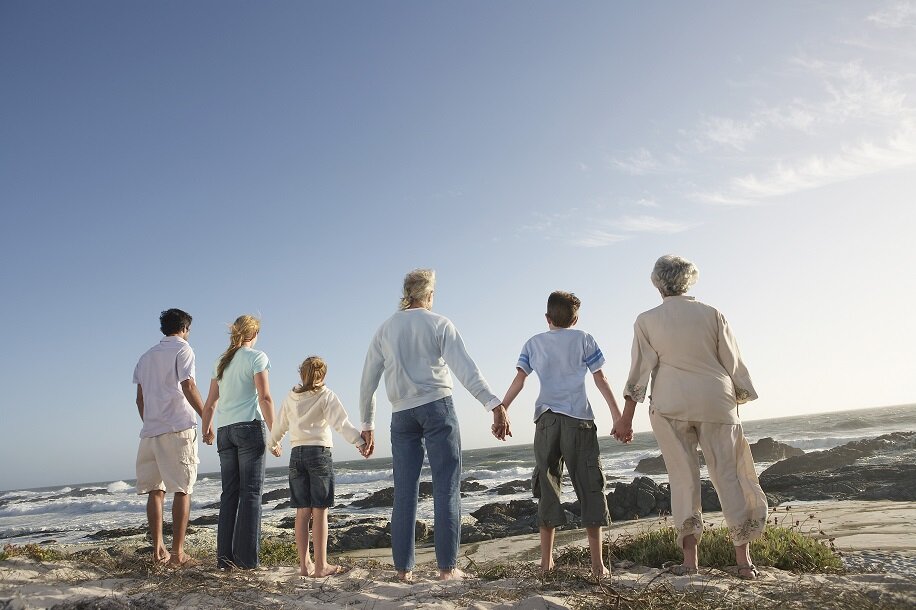All About Blue Zones...and Why They May Hold the Key To Living Better, Longer
I’ve had way too much down time on my hands over the last two weeks. I’d say free time, but recovery from spinal fusion surgery has a way of limiting how much one can enjoy the time. That said, my recovery is going better than I ever could have imagined and I’ll be back at FOR in no time. I’ll likely chronicle this event in my life at some point, but here’s a quick lesson – work on your core strength. Some day you may need it in ways you never imagined.Anyway…back to my down time. My experience in the hospital got me thinking about the health of our general population. You see, I was an anomaly (one Dr. even called me a unicorn; don’t think for a minute I’m letting my wife forget that comment), because other than the back issue I was otherwise in great physical health. Fast forward a day and I’m lying in the hospital bed, finally coherent enough to flip channels, and I come across a CNN Original Series – Chasing Life by Dr. Sanjay Gupta. In this series, Dr. Gupta travels the world looking for reasons why certain cultures live longer. Surrounded by ailing people, I couldn’t help but watch.Interestingly enough, around this time Adrien also introduced me to the concept of Blue Zones. Maybe she was worried I wasn’t going to come back and she wanted to introduce me to a better lifestyle! 
What are Blue Zones?
Blue Zones, discovered by Dan Buettner, are places in the world where people live longer and healthier lives than anywhere else on earth. In each of these places, people living to 90 or even 100 years is common. And they aren’t just living long, either. These people are living healthy, without medication or disability. Buettner has found five blue zones:
The Italian island of Sardinia
Okinawa, Japan
Loma Linda, California
Costa Rica’s isolated Nicoya Peninsula
Ikaria, an isolated Greek island
In these communities, Buettner’s team of medical researchers, anthropologists, demographers, and epidemiologists found common denominators of all the Blue Zones regions. He calls them the Power 9:1) Move naturally. Moving naturally throughout the day — walking, gardening, doing housework — is a core part of the Blue Zones lifestyle.2) The Okinawans call it ikigai and the Nicoyans call it plan de vida: know why you wake up in the morning. It makes you healthier, happier, and adds up to seven years of life expectancy.3) Down shift. Stress is part of life, but Blue Zones centenarians have stress-relieving rituals built into their daily routines. Adventists pray, Ikarians nap, and Sardinians do happy hour.4) Follow the 80 percent rule. People in Blue Zones areas stop eating when their stomachs are 80 percent full and eat their smallest meal in the early evening. 5) Plant slant. Beans are the cornerstone of most centenarian diets. Vegetables, fruit, and whole grains round out the rest of the diet and meat is eaten in small amounts.6) Wine at 5pm. Moderate but regular consumption of wine (with friends and/or food) is part of the Blue Zones lifestyle.7) Being part of a faith-based community adds four to 14 years to life expectancy.8) Put loved ones first. Having close and strong family connections (with spouses, parents, grandparents, and grandchildren) is common with Blue Zones centenarians.
5) Plant slant. Beans are the cornerstone of most centenarian diets. Vegetables, fruit, and whole grains round out the rest of the diet and meat is eaten in small amounts.6) Wine at 5pm. Moderate but regular consumption of wine (with friends and/or food) is part of the Blue Zones lifestyle.7) Being part of a faith-based community adds four to 14 years to life expectancy.8) Put loved ones first. Having close and strong family connections (with spouses, parents, grandparents, and grandchildren) is common with Blue Zones centenarians. 9) Find the right tribe. The world’s longest-lived people have close friends and strong social networks.While we value all the modern conveniences our culture brings, our high-stress, over-scheduled modern society sets us up for failure. Seems kind of counter-intuitive that advancements in our society would decrease our longevity, but the discovery of these Blue Zones may just prove it to be true.Moving to these far-flung places probably isn’t going to happen, but there are ways we can adopt some of the behaviors found in the Blue Zones to increase our life expectancy. Follow me next week and I’ll explain how some communities here in the U.S have adopted a Blue Zone-type of life and seen significant improvements.
9) Find the right tribe. The world’s longest-lived people have close friends and strong social networks.While we value all the modern conveniences our culture brings, our high-stress, over-scheduled modern society sets us up for failure. Seems kind of counter-intuitive that advancements in our society would decrease our longevity, but the discovery of these Blue Zones may just prove it to be true.Moving to these far-flung places probably isn’t going to happen, but there are ways we can adopt some of the behaviors found in the Blue Zones to increase our life expectancy. Follow me next week and I’ll explain how some communities here in the U.S have adopted a Blue Zone-type of life and seen significant improvements.